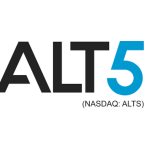NFT & Blockchain
Ethereum’s Revival Sparks NFT Market Surge In 2025

Introduction
Ethereum has always been more than just a cryptocurrency. It represents the backbone of a decentralized digital infrastructure that supports smart contracts, decentralized finance (DeFi), and non-fungible tokens (NFTs). In 2025, as Ethereum’s market price rebounds and climbs past critical psychological levels, we are witnessing an equally powerful surge in the NFT market—particularly those NFTs built on the Ethereum blockchain. The symbiotic relationship between Ethereum and NFTs has once again become a centerpiece of crypto investment narratives and a driver of Web3 innovation.
The Ethereum Resurgence: A Quick Look Back
Ethereum’s recent surge in 2025 did not happen in a vacuum. After enduring the crypto winter of 2022–2023 and a volatile 2024 marked by regulatory uncertainty and shifting investor sentiment, Ethereum’s developers doubled down on scalability and ecosystem expansion. The successful implementation of Ethereum 2.0 upgrades—including full transition to proof-of-stake and sharding enhancements—marked a pivotal shift for the network.
By early 2025, Ethereum’s value not only stabilized but began climbing rapidly, drawing renewed attention from institutional investors, developers, and creators. This return of confidence set the stage for a broader renaissance in decentralized applications, especially in the NFT sector.
The Foundation Of NFTs On Ethereum
NFTs, or non-fungible tokens, are unique digital assets verified on a blockchain. Ethereum pioneered the concept of NFTs through its ERC-721 and ERC-1155 token standards. These technical standards have enabled the creation and ownership of digital collectibles, artwork, virtual real estate, in-game items, and more.
The Ethereum network’s vast developer ecosystem, along with its deep liquidity and early-mover advantage, have helped it maintain dominance in the NFT sector. Popular NFT marketplaces like OpenSea, Rarible, SuperRare, and Foundation are built primarily on Ethereum. Despite high gas fees and periods of congestion in earlier years, Ethereum’s reliability and security kept it at the forefront.
In 2025, the situation has improved dramatically. Upgrades have made transaction fees more predictable and manageable, enabling developers and creators to launch large-scale NFT collections without the same friction that plagued earlier periods. These technical enhancements have unlocked new levels of creativity, scalability, and investor confidence.
Ethereum Price And NFT Activity: A Correlated Surge
One of the most interesting dynamics of the 2025 market is the tight correlation between Ethereum’s price surge and increased activity in the NFT space. As Ethereum gains value, holders find themselves with greater purchasing power and increased incentive to participate in the broader Ethereum-based ecosystem. This includes buying, minting, and trading NFTs.
Market data from leading platforms shows a clear uptick in Ethereum-based NFT transactions. Trading volume on OpenSea rose by over 30 percent in April and May 2025 alone, compared to Q1 levels. Sales of blue-chip collections like Bored Ape Yacht Club, Pudgy Penguins, and Doodles have seen substantial rebounds, while newer collections focused on AI-generated art and digital fashion are attracting fresh attention.
Collectors are once again seeing NFTs not just as speculative assets but as cultural artifacts, community membership tokens, and access points into decentralized economies. This change in sentiment is closely tied to Ethereum’s broader narrative: one of utility, innovation, and value creation.
Key Sectors Benefiting From Ethereum’s NFT Boom
Several verticals within the NFT ecosystem are benefiting directly from Ethereum’s resurgence. Let’s explore a few in detail:
1. Digital Art and Collectibles
Digital art remains one of the most compelling use cases for NFTs. Platforms like SuperRare and Foundation, which curate high-quality digital artworks, have seen a resurgence in both artist participation and collector activity. With Ethereum’s transaction costs lowered and market sentiment turning bullish, creators are launching new works and seeing faster sales cycles.
Additionally, traditional art institutions are increasingly exploring Ethereum-based NFTs as part of their digital strategies. Museums and galleries are experimenting with NFT exhibits, and some are even using Ethereum smart contracts to manage provenance and ownership of physical art pieces.
2. Gaming and Metaverse Assets
The convergence of NFTs and gaming continues to evolve, with Ethereum at the heart of this transformation. Games like Axie Infinity, The Sandbox, and Illuvium rely on Ethereum-based NFTs to represent in-game items, characters, and land. These assets can be traded, leveled up, and monetized both within and outside their respective games.
In 2025, Ethereum’s scalability upgrades are enabling smoother and faster gameplay experiences, attracting mainstream gamers to Web3 titles. These improvements have sparked new investment in gaming studios building on Ethereum, with funding rounds and partnerships making headlines.
3. Virtual Fashion and Digital Identity
Virtual fashion—once a niche—is now a mainstream sector within NFTs. Ethereum-based platforms are enabling brands to release limited-edition wearables, accessories, and avatar skins that users can own and display in virtual environments like Decentraland or VRChat.
These virtual fashion items are often tied to identity and self-expression in online spaces. As more users spend time in the metaverse, the demand for unique, tradable fashion items is growing. Ethereum’s infrastructure supports the complex logic required to manage ownership, exclusivity, and interoperability across multiple virtual worlds.
4. Music and Royalties
Musicians have long been frustrated with centralized streaming platforms that take large cuts of revenue. Ethereum-based NFT platforms like Sound.xyz and Audius are giving artists the tools to sell music directly to fans, manage royalties through smart contracts, and even offer fractional ownership of tracks or albums.
This disintermediation is empowering a new generation of independent artists who can build communities around their work, offer exclusive drops, and monetize their content more effectively. Ethereum’s trustless architecture ensures transparent revenue sharing, immutable rights management, and greater creative freedom.
Institutional Interest And Infrastructure Development
The institutional landscape has also shifted in favor of Ethereum NFTs in 2025. Major auction houses, such as Sotheby’s and Christie’s, are doubling down on digital art sales. Financial institutions are exploring tokenized real-world assets using NFT technology on Ethereum. Even big tech players are showing renewed interest in Ethereum-based NFT integration—Apple, Meta, and Google are quietly rolling out wallet-compatible apps and NFT-driven loyalty programs.
Moreover, Ethereum infrastructure providers like Infura, Alchemy, and Chainlink are investing in NFT-specific solutions—offering scalable APIs, metadata verification, and oracle integrations to power next-gen NFT apps.
This institutional embrace of NFTs is more mature than the hype-driven wave of 2021. Stakeholders are focused on long-term applications, compliance, and real-world interoperability. Ethereum’s technological maturity and community governance give it a clear edge in building sustainable NFT ecosystems.
Challenges And Opportunities Ahead
Despite the momentum, Ethereum-based NFTs are not without challenges. Intellectual property issues, market volatility, and user education remain significant barriers to mainstream adoption. There’s also competition from emerging layer-1 and layer-2 chains like Solana, Polygon, and Avalanche, which are building their own NFT ecosystems.
However, Ethereum’s first-mover advantage, large developer base, and robust security infrastructure continue to make it the preferred choice for serious builders and collectors. As new scaling solutions like EIP-4844 and zkEVMs are implemented, Ethereum’s NFT capabilities will become even more cost-effective and user-friendly.
Looking ahead, interoperability between chains, increased utility of NFTs beyond art (such as academic credentials, health records, and identity verification), and tighter integration with AI-driven content creation are poised to reshape the NFT landscape once again. Ethereum will likely remain the hub of this innovation.
Conclusion
The story of Ethereum and NFTs in 2025 is one of renewed energy, technological maturity, and cultural relevance. Ethereum’s price surge has reignited interest in NFTs, but the foundation of this revival lies in meaningful upgrades, real-world utility, and community-driven innovation.
From digital art to gaming, from virtual fashion to music royalties, Ethereum-based NFTs are demonstrating their ability to revolutionize how we create, own, and interact with digital content. As Ethereum continues to scale and evolve, so too will the possibilities for NFTs. Whether you’re an investor, developer, artist, or gamer, the opportunities in this space have never been more vibrant—or more promising.










